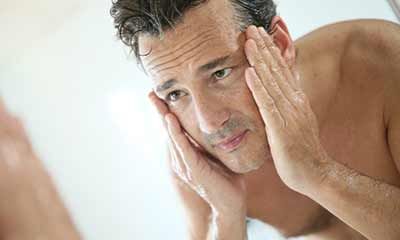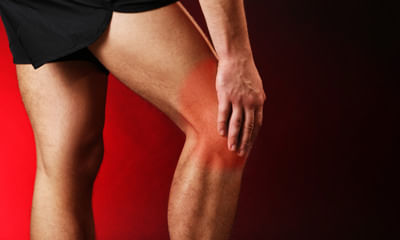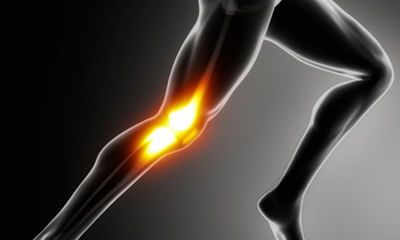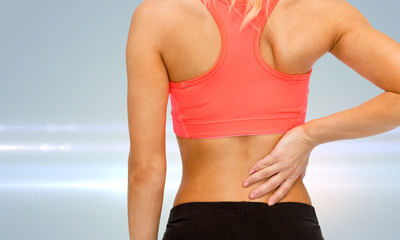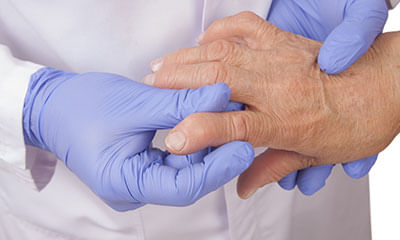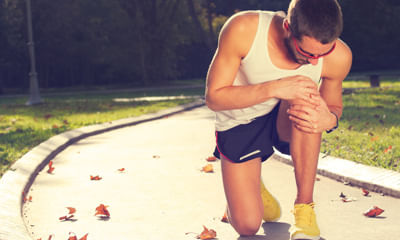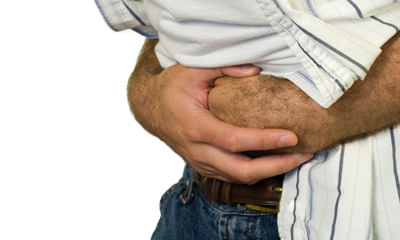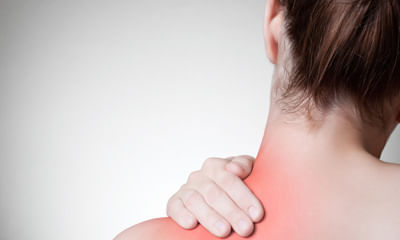Fluid On The Knee Remedies
The skin of my legs has become dry and itchy which sometimes even bleeds on scratching. Many small white bumps filled wi ...
Ask Free Question
This could be eczema or a skin infection. Remedies like sulphur and hepar sulph can help, but a detailed examination is necessary.
I have knee pain past one month I think itâs of over use! and also I have hereditary of knee pain in family, while sit ...
Ask Free Question
It sounds like you may be experiencing knee pain due to overuse, possibly exacerbated by a hereditary predisposition to knee issues. Here are some steps you can take to manage your knee pain and improve your symptoms: rest and ice: give your knees adequate rest to allow them to recover from overuse. Apply ice packs to the affected area for 15-20 minutes several times a day to reduce inflammation and alleviate pain. Elevate: when resting, elevate your legs to reduce swelling and promote circulation. Avoid high-impact activities: limit activities that put excessive stress on your knees, such as running, jumping, or heavy lifting. Instead, opt for low-impact exercises like swimming, cycling, or walking to maintain fitness without exacerbating knee pain. Strengthening exercises: perform gentle strengthening exercises to improve the stability and support of the muscles around your knees. Focus on exercises that target the quadriceps, hamstrings, and calf muscles, as well as exercises to improve hip and core strength. Stretching: incorporate regular stretching into your routine to improve flexibility and range of motion in your knees. Focus on stretching the quadriceps, hamstrings, calves, and it band to relieve tightness and reduce strain on the knees. Proper footwear: wear supportive and cushioned shoes with good arch support to reduce impact on your knees during daily activities. Weight management: maintain a healthy weight to reduce pressure on your knees and minimize strain. Losing excess weight can significantly alleviate knee pain and improve overall joint health. Hot/cold therapy: alternate between hot and cold therapy to reduce pain and inflammation. Use a heating pad or warm compress to relax muscles before gentle exercise, and use ice packs after activity to reduce swelling and pain. Consider orthotics: if you have flat feet or other foot alignment issues, consider using orthotic inserts or custom-made shoe inserts to provide additional support and alignment for your knees. Consult a healthcare professional: if your knee pain persists or worsens despite self-care measures, consult with a healthcare professional, such as an orthopedic specialist or physical therapist, for a thorough evaluation and personalized treatment plan. They can help determine the underlying cause of your knee pain and recommend appropriate interventions, such as physical therapy, bracing, or other treatments.
Science one month I am suffering from right knee modular pain and some time all joint pain including hand, what is remed ...
Ask Free Question
Follow these herbal combination for complete cure vrihad vat chintamani ras 1 tablet twice a day vatari avleh 10 gms twice a day.
My mother aged 58 years suffering from knee joint pains since 10 yrs, morning time she is dizziness ,drowsiness, not act ...
Ask Free Question
Take treatment for her medical problems. Make her active. Knee pain needs some specific treatments known as mipi. Mipi has many options. Treatment can be finalized by seeing patient & her reports. Avoid pain killer meds. Physio may give 10 / 20 % relief.
Severe pain in pubis, low back pain, feeling tired, vomiting during period. Please suggest a solution or home remedy. ...
Ask Free Question
Upper back pain pushups this one may seem basic, but there’s no denying that pushups are one of the best ways to strengthen the pectoral muscles. These can be done on the knees or toes. If you’re not ready for full pushups, start with your hands resting on a solid surface higher than your feet — like a very sturdy coffee table or the edge of a couch, cushions removed, that’s pressed up against a wall — and start on the toes. Having your hands higher than your feet and your body at an angle can be a good way to start a pushup regimen. As you get stronger, you can begin to lower the angle of your body. This will help you transition to full pushups more easily than going from knees to toes. A full plank engages the muscles differently, even at an angle. When doing pushups, aim for 2 sets of 10 reps per day. 1.start in plank position with your hands under your shoulders and your core engaged. 2.as you lower, inhale. 3.as you engage your muscles to push yourself up, exhale. Keep your elbows hugging in close to your body. Keep your focus on slowly breathing as you do these, and on engaging the pectorals while keeping the core tight. Don’t just crank these out to get them done — this can compromise your form and do more harm than good. If the movement is really tough, break the sets into three or five to start, or find a higher point to begin after a week of exercise. If necessary, you can even stand and do pushups pushing against a wall. Chest flyfor this exercise, you’ll need a bench or exercise ball as well as some dumbbells. If you don’t have weights, you can always use the old standby: a soup can in each hand. Just keep in mind that dumbbells are easier to hold and you can get more out of using them, as even 5-pound weights are heavier than your heaviest canned goods. 1.lie with your upper and middle back on a bench or ball, with your legs at a 90-degree angle. Hold a weight in each hand and extend your arms to the sky, elbows slightly bent. 2.as you inhale, lower your arms out wide, until your elbows are at shoulder height. 3.as you exhale, raise your hands until they meet above your chest again. 4.do 2 sets of 10. If that feels pretty easy, up it to 2 sets of 15 or increase the weight you’re using. Dumbbell row strengthening your back muscles is an important component of treating pectusexcavatum. The dumbbell row targets your lat muscles. The way it’s described below also strengthens your core, another important component of treating the condition. You’ll need some dumbbells to complete this move — err on the lighter side if you’ve never done a row before. 1.hold one dumbbell in each hand with your arms extended. Hinge at the hips until your upper body reaches a 45-degree angle. 2.keeping your neck in line with your spine and your gaze straight down, pull your elbows straight back and squeeze between your shoulder blades. 3.extend your arms back to the starting position. Complete 2 sets of 10. Dumbbell rear delt fly another move to strengthen your back, a dumbbell rear delt fly also focuses on the lats, as well as the rhomboids and the traps. Choose a light pair of dumbbells to complete this move and ensure that you’re pinching your shoulder blades together at the top to get the most out of it. 1.hold one dumbbell in each hand with your arms extended. Hinge at the hips until your upper body reaches a 45-degree angle and bring the dumbbells together. 2.keeping your spine and neck neutral, inhale and push the dumbbells out and up to the side until your arms are parallel to the floor. 3.exhale and return to the start in a slow and controlled motion. Complete 2 sets of 10. Exercise is a key component to treating pectusexcavatum. By strengthening your chest, back, and core muscles and stretching your chest cavity, you can combat the condition’s effects. Aim to complete these exercises several times a week to maximize results. For middle back pain side plank with rotation this exercise is an advanced version of the basic plank. It strengthens the arms, shoulders, and obliques by combining a side plank with arm movements. Lie on your right side with your right forearm below your shoulder. Extend your legs, left foot on top of right. Tighten your core. Lift your hips to form a straight line with your body. Raise your left arm straight up. Rotate your torso toward the floor and bring your left arm under your body. Rotate your torso and straighten your left arm to return to the starting position. Start with 1 set of 8–12 reps. Repeat on the other side. Bird dog with elbow to knee this variation on the basic bird dog incorporates fluid movement to engage your abs and back while improving core mobility. Start on all fours, hands below your shoulders and knees below your hips. Tighten your core. Lift and straighten your right leg to hip level. Simultaneously lift and extend your left arm to shoulder level, palm down. Bring your right knee and left elbow toward each other. Return to the starting position. Start with 1 set of 8–12 reps. Repeat on the other side bicycle crunch this classic exercise strengthens your abs by placing them under constant tension. Start on your back. Bend your knees and plant your feet on the floor at hip width. Line up your head and spine. Place yours behind your head, elbows pointing out to the sides. Tighten your core and move your shoulders back and down. Bend your right knee toward your chest and extend your left leg, lifting it a few inches off the floor. Lift your left shoulder and upper back, bringing your left elbow toward your right knee. Tap your left shoulder on the floor and simultaneously switch your legs. Continue alternating elbows and knees, starting with 1 set of12 reps.
My wife, 43 yrs, is suspected with arthritis, is there a remedy in homeopathy? How long is the treatment, tentative cost ...
Ask Free Question
1.resisted terminal knee extension: make a loop with a piece of elastic tubing by tying a knot in both ends. Close the knot in a door at knee height. Step into the loop with your injured leg so the tubing is around the back of your knee. Lift the other foot off the ground and hold onto a chair for balance, if needed. Bend the knee with tubing about 45 degrees. Slowly straighten your leg, keeping your thigh muscle tight as you do this. Repeat 15 times. Do 2 sets of 15. If you need an easier way to do this, stand on both legs for better support while you do the exercise. 2•standing calf stretch: stand facing a wall with your hands on the wall at about eye level. Keep as arthritis is very common that you get generally bilaterally. Ice therapy would definitely help to reduce the inflammation. We also advise you to use knee cap which would help to prevent the knee from damaging further and also to maintain the quadriceps muscle tone •stretching exercises. Regular, steady stretching exercises can reduce muscle spasm and help lengthen the muscle-tendon unit. Don't bounce during your stretch. 3•strengthening exercises. Weak thigh muscles contribute to the strain on your patellar tendon. Exercises that involve lowering your leg very slowly after extending it can be particularly helpful, as can exercises that strengthen all of the leg muscles in combination, such as a leg press.•this is a general knee pain and for this you can follow these measures: one keep a pillow right under the knee while sleeping, next is you can keep ice in the painful area for about 5--10 minutes, it looks like you are is important to check that. Anaemia always leads to the symptoms of being tired and also having body pain though there may not be any pathological reasons for knee pain. With knee exercises you will definitely feel better and muscles must be strengthened.
I'm 23 years old boy I will get leg pain after entering ac room after 10-15 minutes what is the remedy. ...
Ask Free Question
.resisted terminal knee extension: make a loop with a piece of elastic tubing by tying a knot in both ends. Close the knot in a door at knee height. Step into the loop with your injured leg so the tubing is around the back of your knee. Lift the other foot off the ground and hold onto a chair for balance, if needed. Bend the knee with tubing about 45 degrees. Slowly straighten your leg, keeping your thigh muscle tight as you do this. Repeat 15 times. Do 2 sets of 15. If you need an easier way to do this, stand on both legs for better support while you do the exercise. 2•standing calf stretch: stand facing a wall with your hands on the wall at about eye level. Keep as arthritis is very common that you get generally bilaterally. Ice therapy would definitely help to reduce the inflammation. We also advise you to use knee cap which would help to prevent the knee from damaging further and also to maintain the quadriceps muscle tone •stretching exercises. Regular, steady stretching exercises can reduce muscle spasm and help lengthen the muscle-tendon unit. Don't bounce during your stretch. 3•strengthening exercises. Weak thigh muscles contribute to the strain on your patellar tendon. Exercises that involve lowering your leg very slowly after extending it can be particularly helpful, as can exercises that strengthen all of the leg muscles in combination, such as a leg press.•this is a general knee pain and for this you can follow these measures: one keep a pillow right under the knee while sleeping, next is you can keep ice in the painful area for about 5--10 minutes, it looks like you are is important to check that. Anaemia always leads to the symptoms of being tired and also having body pain though there may not be any pathological reasons for knee pain. With knee exercises you will definitely feel better and muscles must be strengthened.
My mother is 82 years old suffering from old age syndrome. She is completely bed-ridden with very little stamina and ene ...
Ask Free Question
It is important to note that homeopathic and ayurvedic medicine should not be used as a substitute for medical care from qualified healthcare professionals. These modalities may be used as complementary therapies to conventional medical treatment and under the guidance of a qualified healthcare professional. In general, homeopathic remedies are individualized to the person's specific symptoms and health condition. A qualified homeopathic practitioner will take a thorough history of the patient's health and symptoms to determine the appropriate remedy. Similarly, ayurvedic medicine involves a personalized approach to treatment based on an individual's dosha type and health condition. An ayurvedic practitioner will evaluate the patient's overall health and recommend a treatment plan that may include dietary changes, lifestyle modifications, and herbal remedies. It is important to note that both homeopathic and ayurvedic medicine should be used with caution in elderly patients with multiple chronic conditions, as there may be potential interactions with conventional medications. Therefore, I strongly recommend consulting with a qualified healthcare professional before starting any new treatment or medication, including homeopathic or ayurvedic remedies. Your mother's healthcare professional will be able to provide a personalized treatment plan based on her individual health needs and ensure that any new treatment is safe and effective for her. Feel free to consult me regarding this. Message me on whatsapp +mobile. My consultation fee is only rs. 50! take care. Wish you health.
Good evening, I have ulcer, knee cap pain, for few years now. But for months now am having stomach noise, most time slig ...
Ask Free Question
Knee pain: resisted terminal knee extension: make a loop with a piece of elastic tubing by tying a knot in both ends. Close the knot in a door at knee height. Step into the loop with your injured leg so the tubing is around the back of your knee. Lift the other foot off the ground and hold onto a chair for balance, if needed. Bend the knee with tubing about 45 degrees. Slowly straighten your leg, keeping your thigh muscle tight as you do this. Repeat 15 times. Do 2 sets of 15. If you need an easier way to do this, stand on both legs for better support while you do the exercise. •standing calf stretch: stand facing a wall with your hands on the wall at about eye level. Keep as arthritis is very common that you get generally bilaterally. Ice therapy would definitely help to reduce the inflammation. We also advise you to use knee cap which would help to prevent the knee from damaging further and also to maintain the quadriceps muscle tone •stretching exercises. Regular, steady stretching exercises can reduce muscle spasm and help lengthen the muscle-tendon unit. Don't bounce during your stretch. •strengthening exercises. Weak thigh muscles contribute to the strain on your patellar tendon. Exercises that involve lowering your leg very slowly after extending it can be particularly helpful, as can exercises that strengthen all of the leg muscles in combination, such as a leg press.•this is a general knee pain and for this you can follow these measures: one keep a pillow right under the knee while sleeping, next is you can keep ice in the painful area for about 5--10 minutes, it looks like you are is important to check that. Anaemia always leads to the symptoms of being tired and also having body pain though there may not be any pathological reasons for knee pain. With knee exercises you will definitely feel better and muscles must be strengthened. Right hand pain it might be due to carpal tunnel syndrome, where the pain will be felt in the wrist. You can do hot water fermentation/ wax therapy for shouldtreat carpal tunnel syndrome as early as possible after symptoms start. Take more frequent breaks to rest your hands. Avoiding activities that worsen symptoms and applying cold packs to reduce swelling also may help. Other treatment options include wrist splinting, medications and surgery. Splinting and other conservative treatments are more likely to help if you've had only mild to moderate symptoms for less than 10 months. Lifestyle and home remedies these steps may provide temporary symptom relief: •take short breaks from repetitive activities involving the use of your hands. •lose weight if you are overweight or obese. •rotate your wrists and stretch your palms and fingers. •take a pain reliever, such as aspirin, ibuprofen (advil, motrin ib, others) or naproxen sodium (aleve). •wear a snug, not tight, wrist splint at night. You can find these over-the-counter at most drugstores or pharmacies. •avoid sleeping on your hands. If pain, numbness or weakness recurs and persists, see your doctor. Alternative medicine integrate alternative therapies into your treatment plan to help you cope with carpal tunnel syndrome. You may have to experiment to find a treatment that works for you. Always check with your doctor before trying any complementary or alternative treatment. •yoga. Yoga postures designed for strengthening, stretching and balancing the upper body and joints may help reduce pain and improve grip strength. •hand therapy. Early research suggests that certain physical and occupational hand therapy techniques may reduce symptoms of carpal tunnel syndrome. •ultrasound therapy. High-intensity ultrasound can be used to raise the temperature of a targeted •area of body tissue to reduce pain and promote healing. Research shows inconsistent results with this therapy, but a course of ultrasound therapy over several weeks may help reduce symptoms.
I am suffering from joint pain since last two years. It increases more while I take rest. Just can't stand straight. Aft ...
Ask Free Question
Treatment goals •to protect the joint from further damages. •provide pin relief. •prevent deformity and disabilities. •increase functional capacity. •improve flexibility and strength. •encourage regular exercise. •improve general fitness. Physiotherapy modalities - hot/cold applications- electrical stimulation- hydrotherapy and spa therapy this should be due to the sciatic nerve compression in the right side probably close to your l5 vertebrae. It can also be due to the strain on the left leg, try wearing mcr chappals which would help you to get relieved from pain. Rheumatoid arthritis multiple joint pains / early morning painit is called as rheumatic arthritis. Treatment goals •to protect the joint from further damages. •provide pin relief. •prevent deformity and disabilities. •increase functional capacity. •improve flexibility and strength. •encourage regular exercise. •improve general fitness. Physiotherapy modalities - hot/cold applications- electrical stimulation- hydrotherapy and spa therapy rehabilitation treatment technique - rest and splinting - compression gloves - assistive devices and adaptive equipment - massage therapy - therapeutic exercise - patient education assistive devices and adaptive equipment occupational therapy improves functional ability in patients with ra. Occupational therapy interventions such as assistive devices and adaptive equipments have beneficial effects on joint protection and energy conservation in arthritic patients. Assistive devices are used in order to reduce functional deficits, to diminish pain, and to keep patients' independence and self-efficiency. Loading over the hip joint may be reduced by 50% by holding a cane. In fact, most of these instruments are originally designed for patients with neurologic deficits; therefore, certain adaptations may be needed for them to be used in patients with arthritis. Elevated toilet seats, widened gripping handles, arrangements related with bathrooms, etc. Might all facilitate the daily life. The procedures needed to increase compliance of the patient with the environment and to increase functional independence are +mainly determined by the occupational therapist. Massage therapy that improves flexibility, enhances a feeling of connection with other treatment modalities, improves general well being, and can help to diminish swelling of inflamed joints. Massage is found to be effective on depression, anxiety, mood, and pain. Therapeutic exercise every joint should be moved in the rom at least once per day in order to prevent contracture. In the case of acutely inflamed joints, isometric exercises provide adequate muscle tone without exacerbation of clinical disease activity. Moderate contractures should be held for 6 seconds and repeated 5–10 times each day. Dynamic exercise therapy in improving joint mobility, muscle strength, aerobic capacity and daily functioning in patients with rheumatoid arthritis (ra). Finally, in chronic stage with inactive arthritis, conditioning exercises such as swimming, walking, and cycling with adequate resting periods are recommended. They increase muscle endurance and aerobic capacity and improve functions of the patient in general, and they also make the patient feel better. It might be due to lack of blood circulation which is the reason for you to have scrotum pain / back pain. You have to do basic aerobic exercises for you to become fit and also to maintain the blood circulation and tone. Patient education in patients with ra, sociopsychological factors affecting the disease process such as poor social relations, disturbance of communication with the environment, and unhappiness and depression at work are commonly encountered. The treatment of rheumatic diseases should provide education and information to their patients about their condition and the various physical therapy and rehabilitative options that are available to improve their quality of life. Passive treatments for rheumatoid arthritis •cold therapy reduces circulation, which ultimately decreases swelling. For example, a cold compress may be placed on the painful area. •cold therapy in acute phase •dosage 10-20mints/1-2 times a day. •heat therapy eases muscle tension and gets blood to flow more quickly to the painful area. For example, a moist, warm cloth may be used to promote circulation. •heat therapy in chronic phase •dosage 20-30mints/1-2 times a day. •hydrotherapy involves reducing your ra-related pain and other symptoms with water. With hydrotherapy, you will be submerged in warm water to relieve your symptoms. •massage can help reduce muscle tension and promote good circulation. It's also a fantastic way to help you manage stress (especially important for people with rheumatoid arthritis). •transcutaneous electrical nerve stimulation (tens) works by blocking pain signals from getting to your spinal cord. It also helps decrease muscle spasms. •tens short term pain relief (6 to 18 hrs) •ultrasound creates warmth using sound waves, whichenchanes circulation and decreases joint pain, inflammation, and stiffness. Exercise for acute phase: •preformed exercise at least once a day. •general assisted movement through normal range (joint mobilisation). •isometric-“static movements” helps to maintain muscle tone without increasing inflammation. Exercise for the chronic phase: •can progress the above exercise to include use of light resistance. •postural/core stability exercises. •swimming/walking/cycling to maintain cardiovascular fitness. •gentle stretch for areas that become tight, such as knees &calves. Regular exercises: •maintaing muscle strength is important for joint stability & preventing injury. •muscles can become weak following reduced activity. •pain signals from yours nerves and swelling can both inhibits muscles. •muscle length can be affected by prolonged positions immobilization and tightness can limit daily activities. Alternative therapies: •thi chi. •musical therapy. •yoga therapy. •relaxation techniques.

